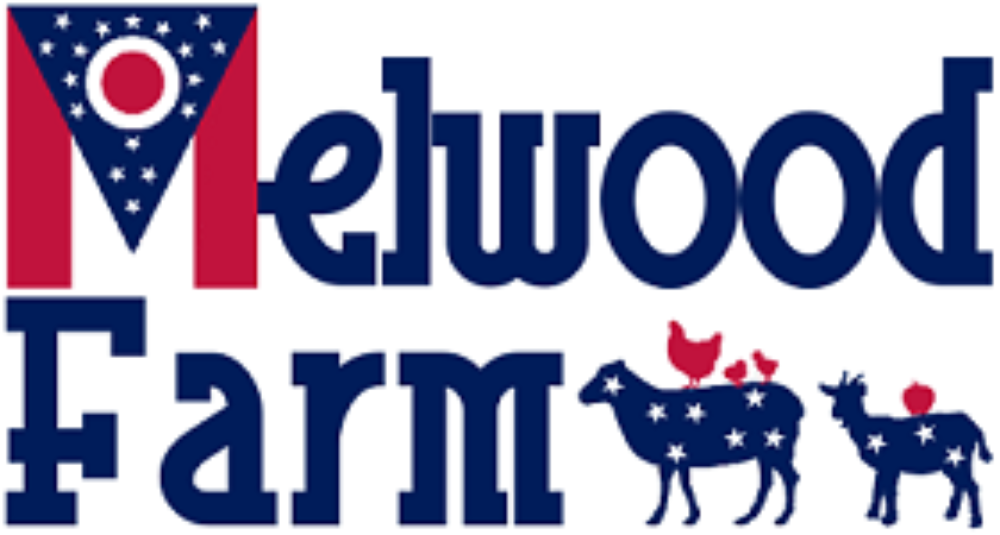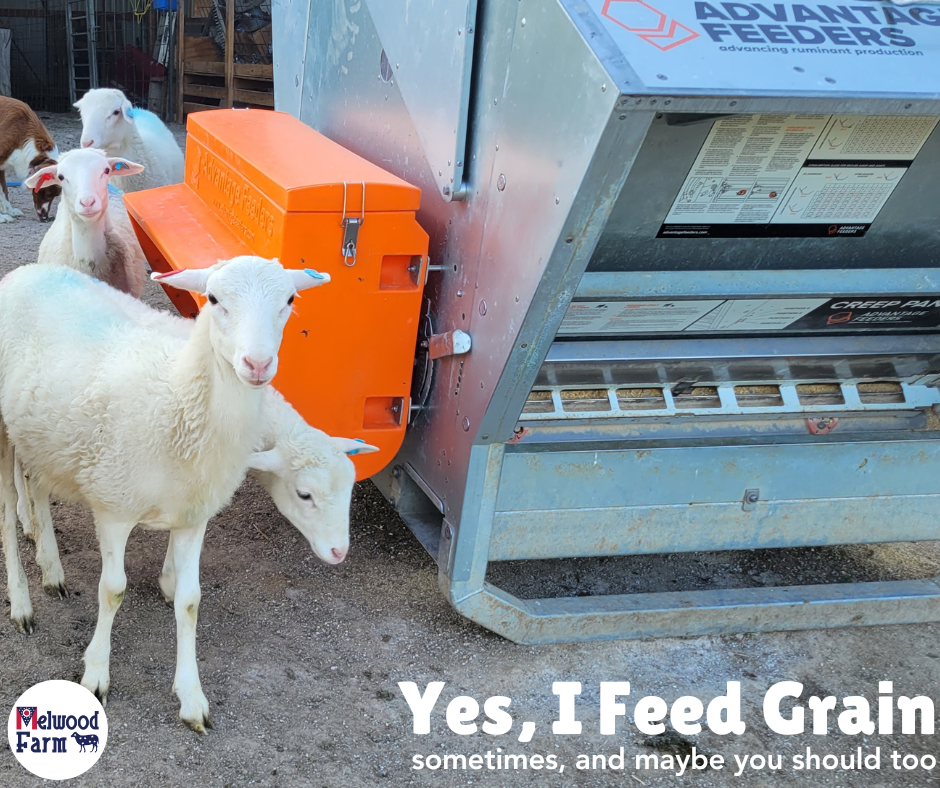and maybe you should too
It’s the time of year that I start getting calls about St. Croix seed stock that include questions about whether or not I feed grain. I love that people are interested and have lots of questions. Talking sheep is one of my absolute favorite past times. Those questions are a good indicator that the potential customer has done some research and will be more likely to succeed with sheep.
There are two questions that get under my skin a little bit. Actually, the reaction that some have to my honest answers to those questions gets under my skin. One of those questions is “Do you feed any grain?” As soon as I hear that question, I know how the conversation will probably go. I also know it will lead to the second question: “Do you vaccinate?”
The Script About Feeding Grain
- CUSTOMER: Do you feed your sheep grain?
- ME: Sometimes. I provide concentrated feed (soybean hull pellets, corn, roasted soybeans) during specific stages of production or when pasture conditions and hay quality do not meet the nutritional requirements of my flock.
- CUSTOMER: Oh. We don’t believe in feeding grain. We want our sheep to be 100% grass fed like <insert social media influencer’s name>. Why do you feed them grain when they can do fine on grass only?
- ME: My flock has done well on 100% pasture in the past. However, because of my success, I grew my flock. Then, I experienced three years of drought that have negatively impacted my pastures as well as hay availability and quality in my region. Even though I reduced my flock size by 25% and pulled them to a dry lot to avoid further damage, the pastures still haven’t fully recovered. The hay I found locally is not good, and alfalfa is so pricey that it simply isn’t an option.
- CUSTOMER: <awkward silence for a few seconds> Okay. We will think about it.
- ME: <knowing they will probably not call back> Okay. Thank you for your interest in my sheep.
Why I Feed Some Grain, Sometimes
It is true that St. Croix sheep can survive on pasture or hay and minerals even when pregnant. However, I want my sheep thrive, not just survive. I want my ewes to produce strong lambs, have lots of milk to feed them, and regain condition quickly. Sometimes I breed for three lambings in two years. That requires good nutrition.
I want my lambs to reach their full genetic potential, not make do with what they can scrounge. Few producers have pastures that are full of highly nutritious forbs that provide plenty of protein, sugars, and all the required nutrients to help lambs grow strong bones, deep muscles, and a little layer of fat. Even perfect pastures suffer in times of drought or flood. It makes little sense to allow the lambs suffer due to one’s own rigid management philosophy. I believe we should feed lambs what they need so they can show us what they’re really made of.
My customers and I prefer the results I get with just a little extra nutrition. More substantial St. Croix are more attractive, have better immune function to fight off illness, put more meat in the freezer, and <shocker> they require slightly better nutrition than their scrawny peers.
Who Wants Spindly Sheep?
I’ve never understood the whole “let’s offer as little to eat as possible and the animals left standing are the best” philosophy. It is my theory that this approach is responsible for so many of our breed having thin muscling and spindly bones. Bodies with more muscle mass require more maintenance calories! Of COURSE scrawny animals can manage with poorer nutrition, but who would want them except to keep the grass mowed? I want and my butcher lamb customers expect to get more than bones and sinew for their freezer.
When I Feed My Sheep
I offer feed to my ewes during last 30-45 days of gestation and the first 45-60 days of lactation for a total of 75-105 days per year. Lambs learn to eat feed by mimicking their mothers. When all the lambs are eating well, I set up panels and a creep gate to prevent access by the ewes. This usually occurs when the lambs are around 6-8 weeks old. I continue feeding the lambs until they are about 120 days of age (4 months) for a total of about 75 days per year. I also offer feed to my rams for the month before breeding season, and if they lose more than 5% of their bodyweight, I offer feed for the month after they are taken off the ewes.
What I Feed My Sheep
My sheep are raised almost entirely on pasture, mixed grass hay, and loose minerals alone. I offer a simple mix of corn, soybean hull pellets, and roasted soybeans (89% DM, 13% CP, 82% TDN, 25% CF, 4% Fat, 0.39% Ca, 0.26% P). The mill adds Deccox when the lambs start eating feed alongside their mothers. I wish I could feed organic or nonGMO, but even if it were available here, I wouldn’t be able to justify the added expense.
All-you-can-eat buffets come with their own set of problems and are expensive. That is not my practice. I use my Advantage feeder so that even though feed is available at all times of day, the feeder’s design makes it physically impossible for the sheep to gorge on it. Adult ewes eat an average of 1.4 pounds per day when offered. Lambs eat an average of 0.75 pound per day when offered. I hand feed rams 1 pound per day.
How Much Does it Cost?
You might be thinking that all this feed costs a bundle. When I bought feed (no Deccox) on March 8, 2025, I paid 17¢ per pound. Assuming the price remains stable, this means it costs about $25 per head per year to supplement my ewes (147 pounds per ewe). If you’ve ever had to raise bottle babies because a ewe was short on milk, you know that $25 is a small price to pay to prevent that from happening.
Is There One Right Way?
I have done it both ways. I started out a true believer of 100% grass fed as the “best and right way.” It worked well enough, although even then my lambs didn’t grow as nicely as they do now. My flock grew. Then, drought hit two years in a row on property that had been mismanaged for years before I got here. I am far from being overstocked. I practice intensive rotational grazing. Still, my pastures are in bad shape.
I finally listened to producers with far more experience instead of social media influencers and the 100% grass fed kool-aid drinkers and realized there is more than one “right” way. On my farm, the right way is the one that produces healthy, genetically sound, desirable sheep using the resources available.
Will I Ever Stop Feeding Grain?
Now that I have seen the benefits of feeding grain, I doubt I will stop unless I have far more grass than I need. I will continue to unapologetically feed my sheep during key stages of production, regardless of popular opinion. I’m happy to discuss the issue to help others understand. However, I will not engage in banter nor tolerate any self-righteous zealotry about grass fed being the only good way. I won’t play into some Internet stranger telling me that my sheep should survive on grass alone. I feed the sheep I have for the production they have, not the sheep someone thinks I should have.

